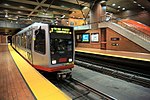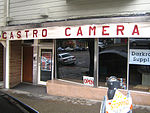Castro District, San Francisco
Castro District, San FranciscoDanish-American culture in CaliforniaFinnish-American culture in CaliforniaGay villages in CaliforniaIrish-American culture in California ... and 8 more
Italian-American culture in CaliforniaLGBT culture in San FranciscoNeighborhoods in San FranciscoNorwegian-American culture in CaliforniaSwedish-American culture in CaliforniaTourist attractions in San FranciscoUse mdy dates from October 2014Working-class culture in California

The Castro District, commonly referred to as the Castro, is a neighborhood in Eureka Valley in San Francisco. The Castro was one of the first gay neighborhoods in the United States. Having transformed from a working-class neighborhood through the 1960s and 1970s, the Castro remains one of the most prominent symbols of lesbian, gay, bisexual, and transgender (LGBT) activism and events in the world.
Excerpt from the Wikipedia article Castro District, San Francisco (License: CC BY-SA 3.0, Authors, Images).Castro District, San Francisco
Castro Street, San Francisco
Geographical coordinates (GPS) Address Nearby Places Show on map
Geographical coordinates (GPS)
| Latitude | Longitude |
|---|---|
| N 37.76171 ° | E -122.43512 ° |
Address
Castro Street 450;452
94114 San Francisco
California, United States
Open on Google Maps







